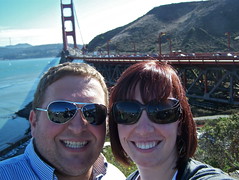
This week in the Easter season we get to dive headlong into one of my favorite stories from John’s gospel – the story of the encounter between the risen Christ and Thomas.
Thomas often gets a bad rap for seeming to doubt what the disciples are saying when they report their witness of the resurrected Jesus.
But there’s been something else that’s stuck out to me as I’ve been reading it through this week, especially as the Derek Chauvin trial has continued in Minneapolis, and that is what the story has to say about woundedness.
We’ve all suffered wounds in this life, whether they are physical, like the scraped knee of a child or emotional like betrayed trust or a broken relationship. We all have wounds that we carry at the personal level. We also carry wounds as a collective body, the body of Christ, by the violence of racism, sexism, and other discrimination that persists in our world.
What we often refuse to understand is that when we inflict wounds on others through action or inaction, we carry wounds from that act as well. Our society carries deep and ongoing wounds from the 400+ years of chattel slavery and colonial violence in this land. Certainly our Black and Indigenous siblings bear the brunt of this violence. But as white people, we’d be foolish to think that our legacy of inflicting such violence leaves us unscathed as well.
When we listen to the testimony of those witnesses in Derek Chauvin’s trial, we hear the trauma of the wounds this violence has caused in their voices. We feel it in their tears. We cannot look away. We cannot escape it.
All of these things affect us differently, but when one member of the body of Christ is wounded, we all carry these wounds with us as well.
What strikes me about the encounter Thomas has with Jesus is that Jesus draws the disciples’ attention to his wounds. “Put your finger here. Look at my hands. Put your hand into my side.”
In this encounter, Jesus doesn’t invite the disciples to recognize him by his familiar face or his voice. Jesus invites Thomas and the disciples to recognize him by his wounds. In doing so, he invites all of us into the woundedness of resurrection life, which is to say that Jesus invites us into a way of living beyond the wound itself.
Resurrection doesn’t take the wounds away. Resurrection opens a path for us to live on the other side of the trauma of whatever it was that wounded us. It gives us an opportunity to heal by incorporating the stories of the wounds into our story as God’s people, bearing witness to the pain, and repenting of our participation in the systems that continue to cause such pain, always remembering the hope and promise of life after the wounding.
After this year of a global pandemic and continued societal pandemics of racism, misogyny, exploitation, and violence, the Thomas story offers us an opportunity for Jesus to encounter us in our woundedness with his own wounds, and brings us to wholeness on the other side.
Whatever wounds you may be dealing with in your life or in your relationships right now, or whatever wounds you may be grieving in our world, know that you do not bear them alone. Good Friday puts the woundedness of creation on full display for all to see. On Easter, we hear the story of how God takes the wounds of this world, and all of the hatred, abuse, and brokenness that cause them and overcomes them to pave a way for living after the wounds.
May the resurrected Christ give you new eyes to see the healing and wholeness possible on the other side.













Please keep your comments positive. I reserve the right to delete rude or insulting comments. If your comment is critical, please make sure it is also constructive. Thank you.